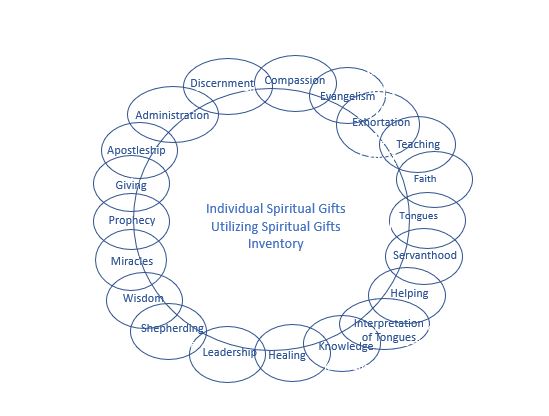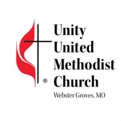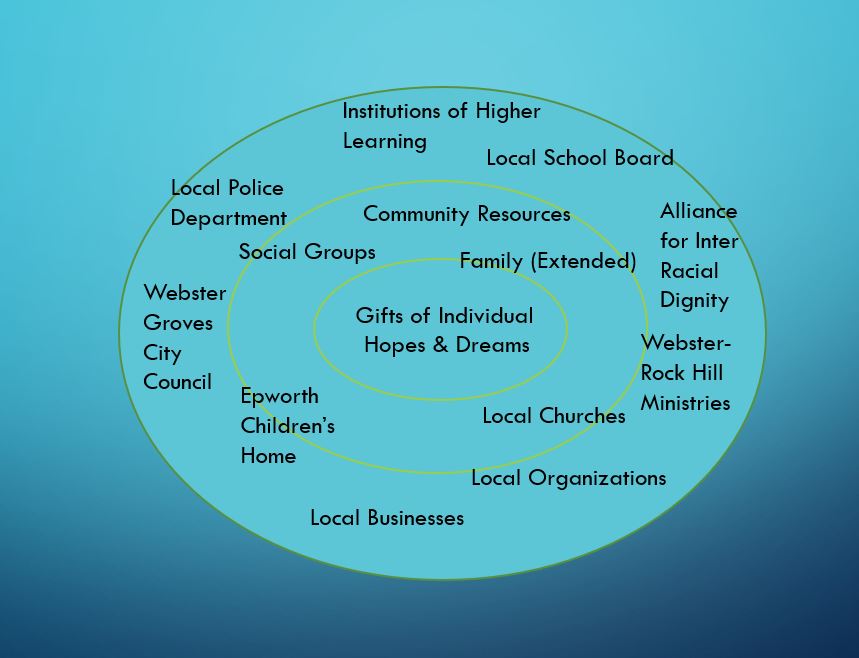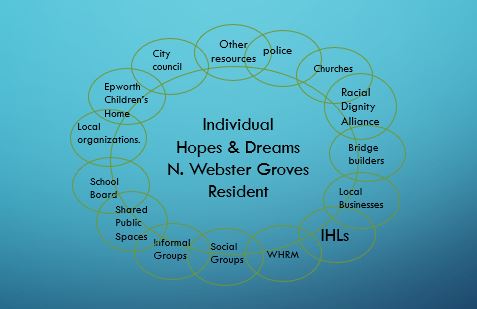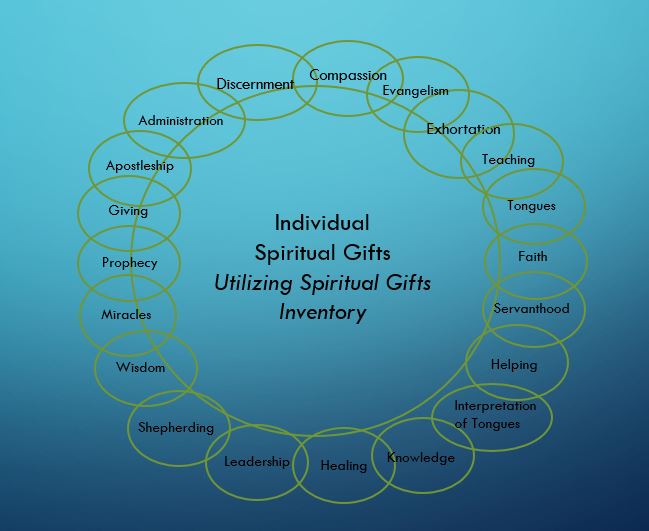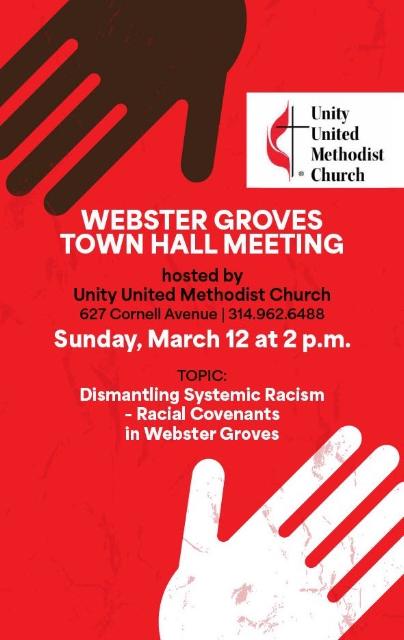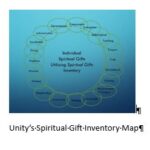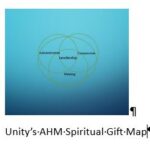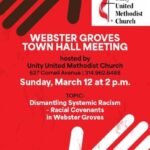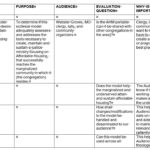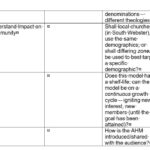Introduction
A pastor can equip and empower an aging congregation to work towards an affordable housing ministry by educating the congregation about the problem of affordable housing (within the local community) and the systemic constructs that create an imbalance in housing, particularly in North and South Webster Groves, Missouri, I can do this work by utilizing agapao̔, teaching love in a social or moral sense, serving as a mediator between the congregation, the denomination and local community groups. The pastor can recruit congregants into the task of ministry by discerning their spiritual gifts and delegating tasks based upon these spiritual gifts, thus allowing them to do the work of ministry through their own gifting which comes from the Holy Spirit.
Historical Context: The problem of affordable housing and its systemic and racial constructs.
History
Unity United Methodist Church is a small African American community of faith with 127 members nestled in the community of north Webster Groves, Missouri. The average age of the congregation is 65.7 years. Unity prides itself in radical hospitality, extravagant generosity and from a historical perspective, civil rights. Birthed in 1989, Unity is the combination of two declining historically black churches, Webster Methodist Episcopal and St. Mark’s Methodist Episcopal churches. The church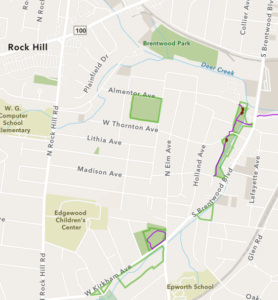 history dates back to Webster Methodist Episcopal, in 1901.
history dates back to Webster Methodist Episcopal, in 1901.
Webster Methodist Episcopal was birthed by formerly enslaved Africans. Webster Methodist Episcopal was built in Webster Heights, MO (community’s name before annexation by Webster Groves, MO in 1960).
In the 1950s the community known as north Webster Groves, MO expanded its boundaries several blocks to the west of Rock Hill Road, but no further.
The then Webster Heights, Missouri was annexed by Webster Groves, Missouri April 5, 1960.
The citizens of Webster Heights, Missouri had no voice nor vote. 13 residents of Webster Heights sued Webster Groves. In 1963, St. Louis County Court of Appeals ruled in favor of Webster Groves. Leaving Webster Heights, with no (immediate) representation for the new tax base that was created.
From 1989 to 2018 Unity had many pastors, all with different visions. In 2018 using the spiritual gift of discernment, the new pastor saw with a wider view the racial disparities between north and south Webster Groves, MO.
https://youtube.com/watch?v=li-QjilQRag%3Fstart%3D0%26end%3D372
Redlining
“Homeowners’ Loan Corporation (HOLC) was a mortgage corporation established by President Franklin D. Roosevelt in 1933 and was active until 1951. With $2 billion in tax-exempt bonds, the HOLC refinanced mortgages in default, helping people during the Great Depression to keep their homes. The HOLC policy favored single-family homes and considered race and immigrant status, thus acting in a discriminatory manner. For example, only 1% of HOLC loans were issued to African Americans between 1933 and 1936. In the HOLC’s color-coded city maps, white and affluent neighborhoods (like Webster Groves) were usually rendered green or blue, indicating they were relatively low risk for home lending and insurance, while black and poor white neighborhoods were orange or red, indicating they were risky. Based on the maps, banks and insurance companies came to deny credit and homeowner’s insurance in neighborhoods colored red or deemed an unacceptable risk. This practice has become known as redlining.”[1][1] Freixas, Catalina, Abbott, Mark Editors, Segregation by Design Conversations and Calls for Action in St. Louis, [footnote 59] pg. 24 ©Springer Nature Switzerland AG 2019.
https://youtube.com/watch?v=li-QjilQRag%3Fstart%3D998%26end%3D1085
Racial Covenants
Restrictive covenants likewise limited Black geographic and economic mobility.
When the U.S. housing market collapsed in The Great Depression, Washington took control and attempted to revive it through New Deal agencies, such as the Federal Housing Administration (FHA) and Homeowners Loan Corporation. “The segregation that President Franklin D. Roosevelt’s administration inherited reflected preexisting institutions, of which restrictive racial covenants may have been the most important. They were still relatively new, however. FDR might well have used his unprecedented leverage over housing finance to undo them. Instead, the New Deal did the opposite. The FHA promoted racial covenants and other instruments of segregation through underwriting standards discouraging home loans in areas “infiltrat[ed]” by “inharmonious racial or nationality groups.” The rationale was the government’s need to protect its investment, and those of white homeowners, against the threat African American neighbors would pose to property values.”[1][1] Kimble, John. “Insuring Inequality: The Role of the Federal Housing Administration in the Urban Ghettoization of African Americans.” Law & Social Inquiry, pp. 402–404 vol. 32, no. 2, 2007.
Using Asset Management Mapping for new ministry
In the previous section I delved into the issue of affordable housing in the St. Louis area with a specific lens of focus upon the community of Webster Groves, Missouri (both north and south). The challenge has been stated. The use of Asset Management Mapping allows pastors and community leaders to group and manage (community) assets and spiritual gifts. In my context, Unity, United Methodist Church, we chose to use asset management mapping and spiritual gifts (spiritual inventory) mapping in an innovative way to develop a new ministry focused on the spiritual gifting of each member who participates in this our Affordable Housing Ministry (AHM). While Asset Based Community Development (ABCD) builds on assets already found within the community, with our new ministry we began building with our focus on the individual, first. Note our asset mappings:
The image left, is Webster Groves ABCD map, followed by the same ABCD map with the individual at the center. The third image is that of Unity’s individual spiritual gifts inventory followed by the specific spiritual gifts that shall be utilized in creating this new ministry. If you are interested learning more about asset based community development or doing more mapping work please see this information: Home – Abundant Community Faith-Based Organizations In Community Development (huduser.gov) What is Asset Based Community Development (ABCD) Handout) (depaul.edu) 4_Essential_Elements_of_ABCD_Process.pdf (abundantcommunity.com)
Our spiritual gift inventory utilizes spirit to help bring forth the realm of God. Reflecting upon the realm of God – The Kingdom – one reflection is on the parable of the Good Samaritan. The white moderate, devoted more to order than justice is the priest, and the Levite. Those who would rather cross on the other side of the road, to ignore the state of affordable housing for black, and brown people of color and the wounds caused by racial injustice. This is a departure from the teachings of Jesus Christ. Residents of (South) Webster Groves are the people who could shine a light of injustice on historical wrongs, the generational trauma of God’s people who have neither voice nor vote nor seat at the table with their neighbor (plesion).
The Pastor as Mediator
A Hybrid approach to Leadership.
Out of the insanity that has both voice and vote in our current society, it is important to create an island of sanity. On an island of sanity, sanity is treating people as Grace Lee Boggs said, as “human human beings. The technical name for our species.”[1]For close to five years, I’ve been moving within and outside different parings and groups, working with the city council, ministerial alliances, institutions of higher learning, social justice groups all centered around affordable housing for North Webster Groves, Missouri. Joseph McBrayer’s Boundary Leadership video is very informative as he talks about ‘thin places’. Places where we as boundary leaders reside, places where we cross and the tension in between these boundaries. The traits, listening, reflection, stillness, paying attention, systems level thinking, self-care, contemplation, a slowing down, and curiosity are key for a leader, to freely move through these parings and small groups. McBrayer goes on to say, boundary leaders operate in a ‘Top Down’ fashion where we envision the whole system, being careful not to have tunnel vision. The key for boundary leaders is to engage people and the world around them. We are not constricted by our boundaries.[2]In addition to these thin places McBrayer discusses, I found a liminal space. A liminal space with my congregation and even the neighborhood that we are called to serve. Just as our neighborhood and its residents are transitioning, so was our congregation. I found us in a liminal space faced with the decision of crossing such a big threshold for new ministry and the uncertainty that awaits. Thinking of our community – our plesion – and the liminal spaces in which they reside, faced with ever mounting taxes and searching for a doorway to relief. The liminal space of a pastor traversing  an uncertain future within the current space and the liminal space of our plesion bound by the systemic constructs of their present circumstance, to their place of lodging and to the land merged. Thin places and liminal spaces. Daunting though it seemed, one is reminded of Rosetta E. Ross’ reflection on agapaoʿ from Luke 10:27 showing love “in a social or moral sense”. Armed with love of God, love of self and love of neighbor, as a congregation we brought these together in liminal and thin spaces by using our spiritual gifts.[1] Wheatley, Margaret J., Who Do We Choose To Be? Facing Reality Claiming Leadership Restoring Sanity, pg. 116. Berrett-Koehler Publishers, Inc., Oakland, CA copyright © 2017.[2] Gunderson, G., and J. Cochrane. Religion and the Health of the Public: Shifting the Paradigm, pg. 119-121. Palgrave Macmillan US, 2012. ProQuest Ebook Central, https://ebookcentral.proquest.com/lib/emory/detail.action?docID=931797.
an uncertain future within the current space and the liminal space of our plesion bound by the systemic constructs of their present circumstance, to their place of lodging and to the land merged. Thin places and liminal spaces. Daunting though it seemed, one is reminded of Rosetta E. Ross’ reflection on agapaoʿ from Luke 10:27 showing love “in a social or moral sense”. Armed with love of God, love of self and love of neighbor, as a congregation we brought these together in liminal and thin spaces by using our spiritual gifts.[1] Wheatley, Margaret J., Who Do We Choose To Be? Facing Reality Claiming Leadership Restoring Sanity, pg. 116. Berrett-Koehler Publishers, Inc., Oakland, CA copyright © 2017.[2] Gunderson, G., and J. Cochrane. Religion and the Health of the Public: Shifting the Paradigm, pg. 119-121. Palgrave Macmillan US, 2012. ProQuest Ebook Central, https://ebookcentral.proquest.com/lib/emory/detail.action?docID=931797.
As Unity has been led, seeing the great disparity that exists in her community, with our neighbor the church saw the need for a practical, tangible solution to help. One such source is a grant. One can secure a grant in the Missouri Conference of The United Methodist church by writing with specificity. In this particular case, a justice grant for new ministry. In writing this grant it is important that the congregation is healthy and faithful in its stewardship by paying both district and congregational apportionments. If grants were successfully applied for in the past, it is also important that the congregation adhered to the purpose of previous grants with ministries that affected change within and/or outside the pastorate. This has been Unity’s history.
While writing the grant, it is important to give scriptural references for the ministry with a timeline for results. There should be a clear methodology on how the ministry was formed as well as grant execution. The district shall expect a written report on how the funds were spent, with both qualitative and quantitative results. A grant was written utilizing the micro loan concept. The grant is designed to assist with housing, paying taxes, small home renovations, down payments on homes, and homeownership repair. The Gateway Central District of The United Methodist Church saw fit to award the church a $5,000 grant (originally written for $100,000).
https://youtube.com/watch?v=li-QjilQRag%3Fstart%3D2052%26end%3D2445
Our micro loan grant was written to address systemic racism, it’s constructs and affects as it relates to affordable housing within the community of Webster Groves, Missouri. Yet several older church members essentially do not want any part of this. They have developed friendships and relationships with our neighbors to the south. They have come to know their ways and did not want to change. Others knew that something had to be done, and change needed to come. As shepherd of this aging congregation, operating in liminal spaces and thin places, I knew that our congregation needed to move as the Holy Spirit leads, guides us in this endeavor, in this new ministry. The catalyst for this grant was borne out of the veil of racial inequality that was removed during the height of the COVID-19 pandemic.
With the grant as Unity’s primary financial resource, the congregation developed a ministerial framework consisting of members with a passion for justice and spiritual gifts to support the development, planning and implementation of the ministry. One crucial element was to include a policy stakeholder, a local alderman/alderwoman to help the congregation traverse the legal and political aspects of creating such a ministry.
Recruiting for the ministry.
Sharing Stories
Hester and Jones define story as a spoken or written account of connected events, creating a plot or thread unfolding, leading somewhere followed by a phase of uncertainty, unpredictability, or crisis and (finally) ending with a resolution. The context is the circumstance that prompts the narrator to tell the story. The purpose is the reason the storyteller tells it. The central idea of narrative story is to approach stories with curiosity – not assuming. Stories tell who we are and can be an expression of our world view. Stories can offer insight into our and others’ lives, that’s why at the very start of creating this ministry it was – and still is – important not only to tell our stories, but also to listen. In listening to parishioners’ stories and affirmation of the same, I heard their pride in the community they created. Additionally, parishioners sharing their stories helps them to understand their relationship to the problem. By glancing at their body language and the tone in their voices, it became clear that the beloved community that was created was a promised land that had come to fruition.
https://www.youtube.com/watch?v=adkXgQ5UmC4?start=194&end=292
Equipping and Empowering
Our Affordable Housing Ministry (AHM) was birthed out of a need for equity and justice, a need for a seat at the table, with the entities and individuals who continue to perpetuate systemic racism in the community of Webster Groves, Missouri. There is much work to be done. So much – too much for one person. We need more leaders. What is needed is more like-minded individuals who can roll up their sleeves to do the hard work of building community. Pastoral leadership began work by building, empowering, and educating leaders within the congregation. The United Methodist Church is ripe with courses and videos designed to build ministry and to strengthen spiritually. 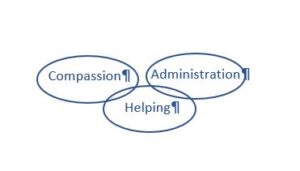 Unity builds leaders based upon their gifts, (which are endowed by our Creator). The members of AHM were selected by the pastor in an objective manner based upon these gifts. The gifts of administration, compassion and helpfulness. Let us focus on the three gifts chosen: Administration – the gift of organizing human and material resources for the work of Christ, including the ability to plan and work with people to delegate responsibilities, track progress, and evaluate the effectiveness of procedures. Administrators attend to details, communicate effectively, and take as much pleasure in working behind the scenes as they do in standing in the spotlight. Compassion — the gift of exceptional empathy with those in need that moves us to action. More than just concern, compassion demands that we share the suffering of others to connect the gospel truth with other realities of life. Compassion moves us beyond our comfort zones to offer practical, tangible aid to all God’s children, regardless of the worthiness of the recipients or the response we receive for our service. Helping – the gift of making sure that everything is ready for the work of Christ to occur. Helpers assist others to accomplish the work of God. These unsung heroes work behind the scenes and attend to details that others would rather not be bothered with. Helpers function faithfully, regardless of the credit or attention they receive. Helpers provide the framework upon which the ministry of the body of Christ is built.[1] The tacit trait of each member is leadership. AHM participants consist of a retired police lieutenant, a city council woman, a social worker, and retired combat veteran. The gifts of these individuals and the extravagant generosity of this community bodes well for a new justice ministry seeking to assist plesion. These gifts and this ministry help to create a greater sense of community. Our denominational response to oppression is compassion, commitment, and a desire for social justice. Here are great opportunities for individual and communal growth. It is also an opportunity for spiritual growth for the members of the ministry, to include the pastor.[1] Dick, Barbara & Dan R. Spiritual Gifts Inventory Key and Definitions, Copyright © 2010, http://equippedforeverygoodwork.wordpress.com (denominational tool) Spiritual Gifts Inventory
Unity builds leaders based upon their gifts, (which are endowed by our Creator). The members of AHM were selected by the pastor in an objective manner based upon these gifts. The gifts of administration, compassion and helpfulness. Let us focus on the three gifts chosen: Administration – the gift of organizing human and material resources for the work of Christ, including the ability to plan and work with people to delegate responsibilities, track progress, and evaluate the effectiveness of procedures. Administrators attend to details, communicate effectively, and take as much pleasure in working behind the scenes as they do in standing in the spotlight. Compassion — the gift of exceptional empathy with those in need that moves us to action. More than just concern, compassion demands that we share the suffering of others to connect the gospel truth with other realities of life. Compassion moves us beyond our comfort zones to offer practical, tangible aid to all God’s children, regardless of the worthiness of the recipients or the response we receive for our service. Helping – the gift of making sure that everything is ready for the work of Christ to occur. Helpers assist others to accomplish the work of God. These unsung heroes work behind the scenes and attend to details that others would rather not be bothered with. Helpers function faithfully, regardless of the credit or attention they receive. Helpers provide the framework upon which the ministry of the body of Christ is built.[1] The tacit trait of each member is leadership. AHM participants consist of a retired police lieutenant, a city council woman, a social worker, and retired combat veteran. The gifts of these individuals and the extravagant generosity of this community bodes well for a new justice ministry seeking to assist plesion. These gifts and this ministry help to create a greater sense of community. Our denominational response to oppression is compassion, commitment, and a desire for social justice. Here are great opportunities for individual and communal growth. It is also an opportunity for spiritual growth for the members of the ministry, to include the pastor.[1] Dick, Barbara & Dan R. Spiritual Gifts Inventory Key and Definitions, Copyright © 2010, http://equippedforeverygoodwork.wordpress.com (denominational tool) Spiritual Gifts Inventory
Theology of the Holy Spirit and spiritual gifts
It is the Holy Spirit, that equips us with the gifts needed for ministry. The Holy Spirit, the third being in the Godhead, the Holy Spirit enables and empowers disciples to live a life that is not only pleasing to God, but also one who seeks that God’s will be done. The Holy Spirit is seen as the source of spiritual gifts. Our abilities, gifted by God, to all who believe to build the church and to be in service to one another. Paul writes of these gifts. The gifts of prophecy, healing, speaking in tongues and different forms of leadership and service are just a few. These spiritual gifts are manifestations of the Holy Spirit’s presence and power. Spiritual gifts are many. We as the church, as believers, do not all have the same gifts. Our gifts work in harmony with each other in building up the church and helping our plesion.
The task of delegating according to those spiritual gifts.
In ministry, particularly a new ministry, it is important to delegate jobs and activities based upon everyone’s gifting. This helps for a successful ministry by allowing each member to operate from a place of passion and joy. This also affirms the gifts of each. Allowing participants in the ministry to operate from their gifts can assist in their spiritual growth and thus helps the overall success of the ministry.
Holding each other accountable in love (Wesleyan dimension).
Holding each other accountable in love is a Wesleyan methodology that does not seek to condemn, but to build up. To build one up spiritually and in the ways of Jesus Christ. As this concept relates to ministry, particularly new ministry, is to hold the participants in the ministry accountable to the tasks they have been assigned. It is important to do this in a loving way so as not to cast judgement nor doubt. This involves approaching each other with compassion, humility, and a desire to help each other become more Christ-like. We are human; therefore, we are not perfect and from time to time in need of God’s divine grace.
Interpretation, Findings & Future Implications:
The question of how a pastor can motivate an aging congregation to do the work of new ministry has been outlined. One key factor is knowing the pastorate’s history first when attempting a new ministry, particularly one that attempts to shine a light on social injustices within the local community. It is important to note any intangibles the church may have, this pastorate has the gifts of extravagant generosity, hospitality, and pride; historical pride in what they were able to create despite social injustices. This is a resilient community. The parable of the good Samaritan serves as a model for this community of faith and our plesions. There are too many examples in our present-day society of what happens when we do not act, when we are unable to discern the needs of others, when we do not heed the call of the Holy Spirit to show compassion to one in need. Society has coined the phrase elegant racism, code words, phrases that are used in racist veiled ways to maintain the racist systems that disenfranchise, harm and hurt.
While in the spiritual realm, Christ’s table, the eucharist, is large and inviting to all. There are those in South Webster Groves, Missouri who stand on the margins of North Webster Groves, Missouri and gaze into the neighborhood. Wishing an invitation, wanting to be invited yet they feel their voice shall not be heard. The white liberal, with no voice – on the margins of a marginalized neighborhood.
Using discernment, agapao̔, teaching and sharing love in a social or moral sense, and the invitation of spiritual gifts helps all with a desire to build The Kingdom an opportunity to serve, including those in South Webster Groves, Missouri. Utilizing spiritual gifts of compassion, administration and helping can not only build a successful justice ministry for affordable housing in the community of North and South Webster Groves, Missouri, these gifts can sustain it, until there is no longer a need. The use of spiritual gifts allows parishioners to participate in ministry based upon their gifting – their passion – their joy. The Good Samaritan, as the parable goes, ensured the care of the injured traveler, until there was no longer a need.
While the need still exists in Webster Groves, Missouri, it is important that this new ministry model is portable. During the month of March Unity hosted a townhall meeting to discuss racial covenants and the dismantling of same. Our mayor, Laura Arnold (former AHM committee member) discussed racial covenants specifically with tools on how to dismantle. Before the townhall concluded, Rev. Dr. Wendy Brenner had members of the community list their names and contact information for further discussion on affordable housing. Unity’s new AHM is portable and the worksheet below was shared with the Webster Groves Ministerial Alliance with the hope that our colleagues can follow our lead.
